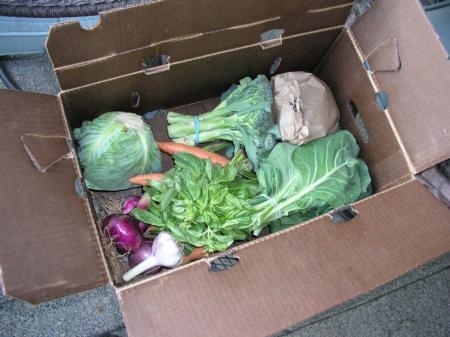UC Blogs
Subscribing to vegetables adds diversity to the menu
For some families, acquiring to a "community supported agriculture" membership gets children more interested in vegetables, reported in the Chicago Tribune this week.
"We've heard some people say when the box gets delivered, it's almost like Christmas. The kids unpack it and they get very excited," Ryan Galt, professor in the Department of Human and Community Development at UC Davis.
But subscribers should understand being a member of a CSA is not the same as going to the grocery store for their produce. Some suggestions from the experts:
- Be aware there's more growing on vegetable farms than just carrots and potatoes
- Be willing to take risks in the kitchen
- Take time to research recipes and to cook
- Because some farmers need up-front money to start the season, you may have to pay a substantial sum before receiving produce
- Food is provided strictly in season for the farm, so don't expect asparagus in September
Galt said it's also worth asking how the farm is doing financially for committing to the CSA.
"It's hard to ask because it's not a normal conversation topic in the U.S.," he said, adding that the point of CSAs in the beginning was the community figuring out how to help small farmers survive. "Farming is extremely difficult on all ends."
Fall
Fall is a well-named season. Downed leaves are filling rain gutters, carpeting lawns and blowing into the nooks and crannies of yards all over Solano County.
I’ve noticed something that accompanies all those leaves hitting the ground, and it’s just as annoying: leaf blowers.
(I promise this will not be a screed on blowers. They have their place in modern yard maintenance. But do we really have to fire up those blowers at 7:30 a.m. on a Saturday? And, honestly, does anyone rake anymore?)
All of this begs the question: Do we really need to clean up and haul off all those fallen leaves, only to turn around and buy bags of mulch for our yards? What’s the research-based word on using our leaves as “free” mulch? The University of California Cooperative Extension Central Coast & South Region Center for Landscape and Urban Horticulture has created a list of the pros and cons of mulch that’s very helpful. Bottom line: It does indeed pay to use your own leaves as mulch. It helps to control weeds, conserve moisture, moderate soil temperature, enhance water absorption, prevent erosion, and enrich the soil.
The key is to use only healthy leaves. Don’t toss in the mildewed grape leaves or the rust-infested rose leaves. Do consider using those pecan or walnut shells as mulch.
Another suggestion I’ve seen in the quest for successful mulching is a leaf shredder. Or, if you don’t want to go out and pay for a shredder, use your lawn mower to chop up the leaves, gather them up and spread a 2- to 4-inch layer around your plants. Remember, mulch should be used as a top dressing only. Do not mix raw mulch in with your garden soil, as it will deplete the nitrogen level in your soil as it decomposes.
My husband rakes up the leaves on our property and tosses them into compost piles. We eventually get lovely shovelfuls of leaf mold, compost that uses only leaves. Here’s a link to another UCCE article on making leaf mold, which you can use as a soil amendment or mulch.
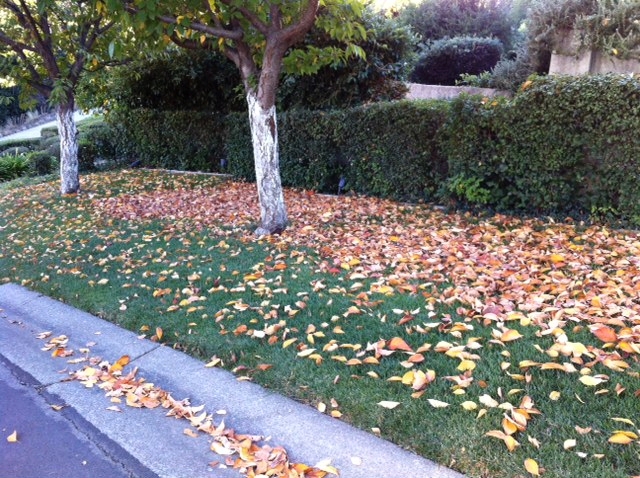
A neighbor’s normally spotless front lawn is barely visible under a blanket of newly fallen leaves. (Photo by Kathy Thomas-Rico)
A Feast Fit for a King and Queen (Bee)
You like the taste of honey, right? How about “A Taste of Mead and Honey?” That’s even better! The UC Davis Honey and...
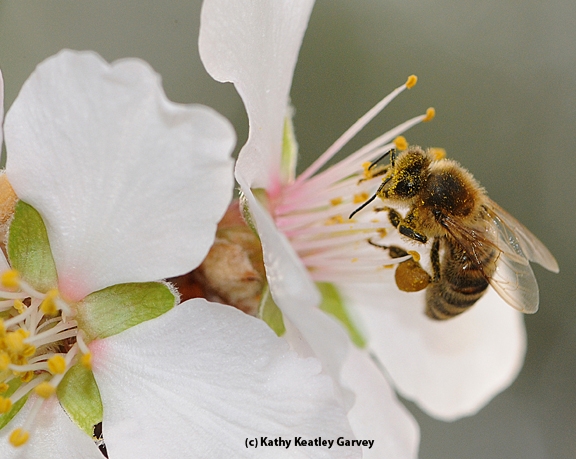
When February arrives, honey bees will be out pollinating the almonds. (Photo by Kathy Keatley Garvey)
Fun-Loving, Sun-Loving Cosmos
Oh, the fun-loving, sun-loving cosmos. A native of Mexico and a member of the sunflower family, Asteraceae, this plant brightens many a garden,...
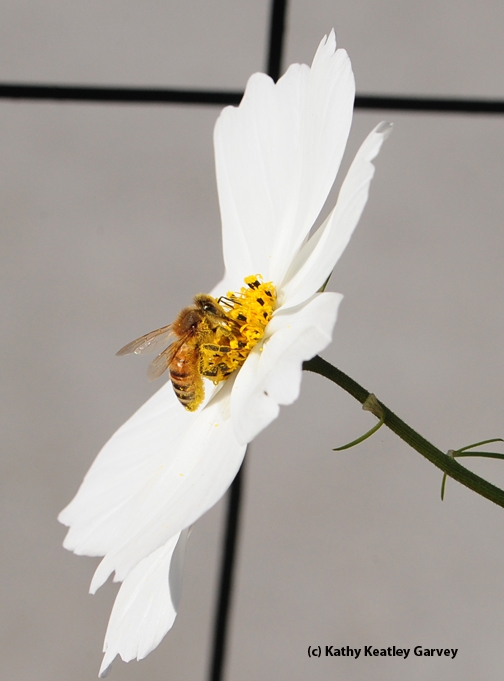
Honey bee visiting a cosmos. (Photo by Kathy Keatley Garvey)
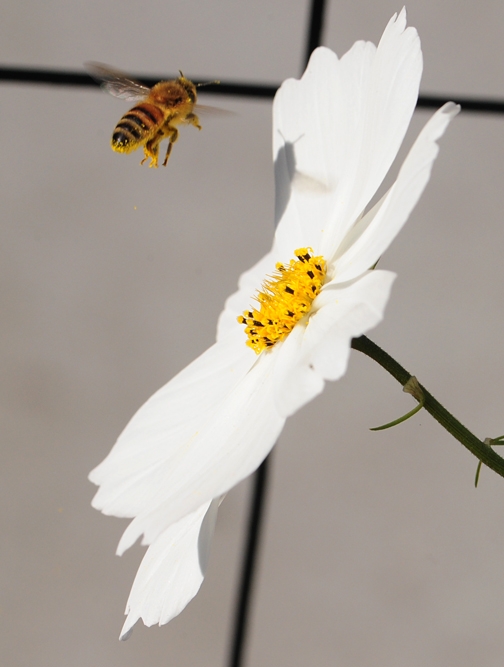
Honey bee packing pollen, up, up and away. (Photo by Kathy Keatley Garvey)o
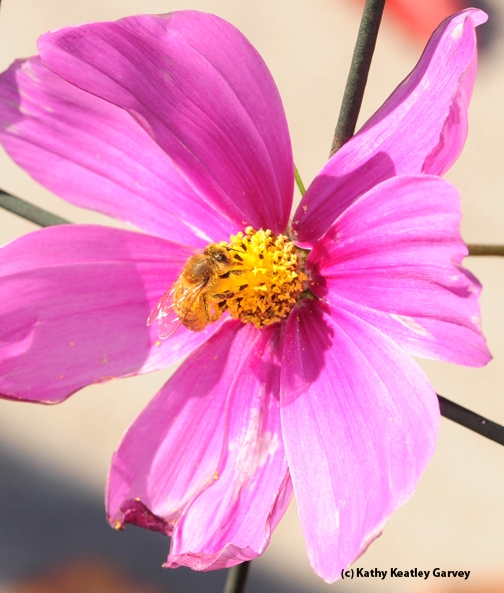
This honey bee is "in the pink"--pink cosmos. (Photo by Kathy Keatley Garvey)
Pistachio Day 2014
The annual Statewide Pistachio Day will be held on Wednesday January 29th, 2014 at the Visalia Convention Center. Each year Pistachio Day is...


